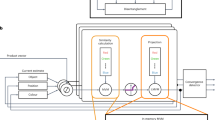Abstract
THE communication by Longuet-Higgins1 has prompted me to suggest a different system of diffuse memory storage, which is based on holography like that described by Gabor2 but differs from it in not requiring coherent repetitive vibrations. Many systems of diffuse memory storage based on the interference principle are possible, holography being one. The following requirements are essential.
This is a preview of subscription content, access via your institution
Access options
Subscribe to this journal
Receive 51 print issues and online access
$199.00 per year
only $3.90 per issue
Buy this article
- Purchase on Springer Link
- Instant access to full article PDF
Prices may be subject to local taxes which are calculated during checkout
Similar content being viewed by others
References
Longuet-Higgins, H. C., Nature, 217, 104 (1968).
Gabor, D., Nature, 161, 777 (1948).
Author information
Authors and Affiliations
Rights and permissions
About this article
Cite this article
CHOPPING, P. Holographic Model of Temporal Recall. Nature 217, 781–782 (1968). https://doi.org/10.1038/217781a0
Received:
Issue Date:
DOI: https://doi.org/10.1038/217781a0
Comments
By submitting a comment you agree to abide by our Terms and Community Guidelines. If you find something abusive or that does not comply with our terms or guidelines please flag it as inappropriate.



